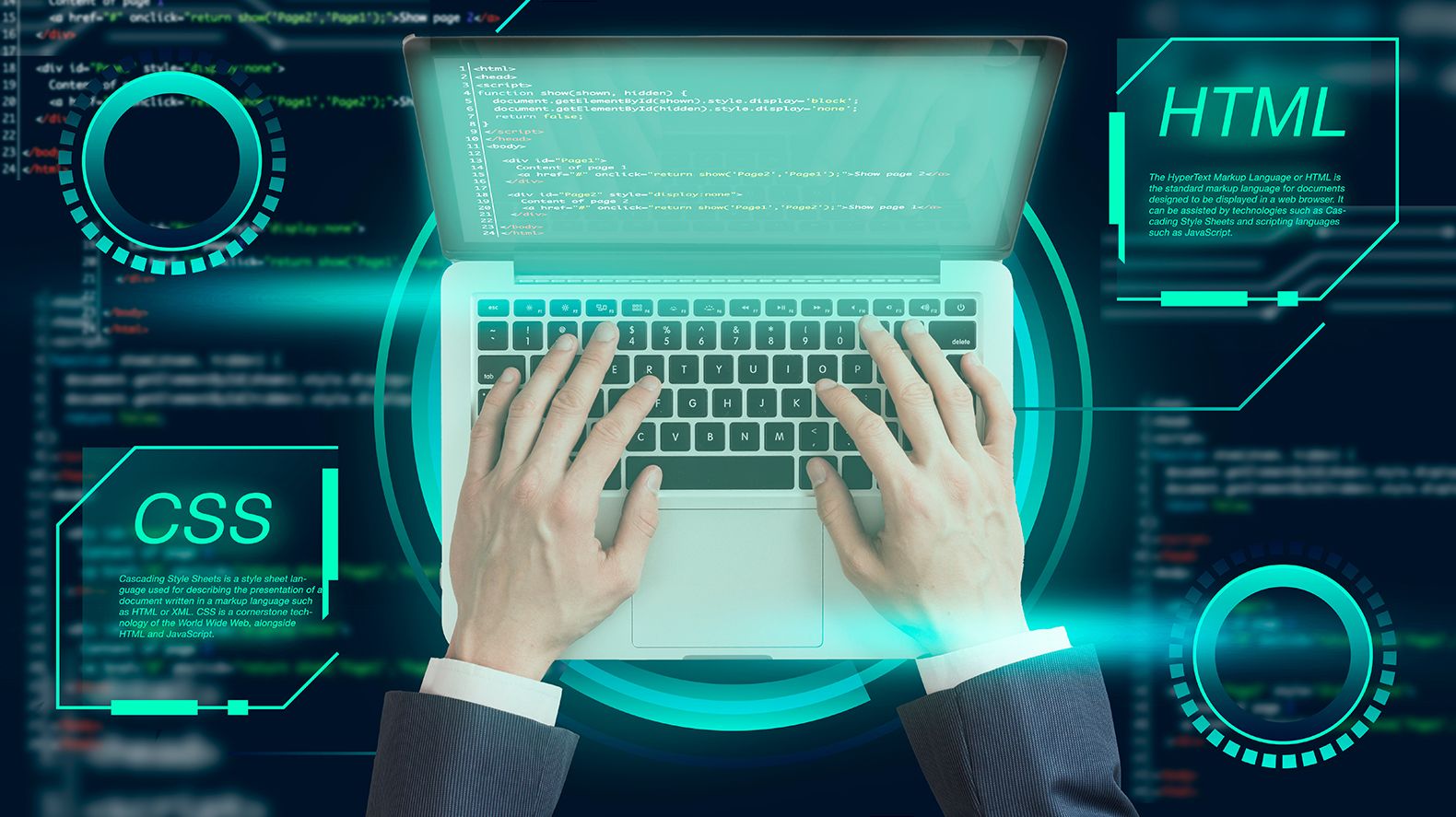Top Software Development Trends in 2025: Insights for USA-Based Businesses

The software development industry is set for some incredible changes in 2025. That is why, for USA businesses aiming to maintain a competitive edge, understanding these emerging software development trends is crucial. This article delves into the top software development trends of 2025, offering insights into innovative software solutions that can drive tech business growth in the USA.
Artificial Intelligence (AI) and Machine Learning (ML) Integration
In 2025, AI and ML will continue to become more integral to software development, revolutionizing applications’ designs and functions. Developers use AI to automate code generation, proactively detect flaws, and enhance performance. Consequently, this integration leads to more efficient development cycles and the creation of applications capable of predictive analytics and personalized user experiences.
For instance, AI-driven tools can analyze vast datasets to predict user behavior, allowing businesses to tailor their services effectively. As a result, this personalization enhances user engagement and satisfaction, providing a significant competitive advantage in the tech industry.
Low-Code and No-Code Development Platforms
Low-code and no-code platforms have become widely used due to the need for quick application development. Through user-friendly interfaces, these platforms enable people without much coding experience to create applications. Moreover, for USA-based businesses, this means faster deployment of solutions and reduced development costs.
By utilizing these platforms, companies can quickly respond to market changes, prototyping, and launching applications in a fraction of the time required for traditional development. Furthermore, this agility is crucial in a fast-paced business environment, enabling firms to stay ahead of competitors.
Cloud-Native Development and Edge Computing
Cloud-native development is now the norm, with apps made to take full use of the flexibility and scalability of cloud settings. Additionally, when coupled with edge computing, which processes data closer to its source, businesses can achieve reduced latency and improved performance.
For example, in industries like finance and healthcare, where real-time data processing is critical, combining cloud-native and edge computing strategies ensures that applications are both responsive and reliable. This approach supports the development of innovative software solutions that meet stringent performance requirements.
Emphasis on Cybersecurity and Privacy
It is critical to incorporate strong security measures into the software development lifecycle due to the growing sophistication of cyber attacks. In 2025, USA-based businesses are adopting a cybersecurity-first mindset, ensuring that applications are secure by design.
This requires implementing methodologies like DevSecOps, where teams share responsibility for security at every stage of development. By proactively addressing vulnerabilities and ensuring compliance with data protection laws, businesses can enhance user trust and secure their operations.
Sustainable Software Development Practices
Nowadays, sustainability is a crucial factor in software development. To reduce their influence on the environment, developers are concentrating on developing energy-efficient apps and employing green hosting options.
Adopting sustainable practices helps firms attract eco-conscious customers while also aiding in environmental protection. This strategy can improve a brand's reputation and satisfy the increasing call for corporate social responsibility.
Progressive Web Apps (PWAs) and Super Apps
The capacity of Progressive Web Apps (PWAs) to provide app-like experiences through web browsers has led to their popularity. They offer advantages, including cross-platform compatibility, quick loading times, and offline functionality.
Additionally, the concept of super apps—platforms that combine multiple services into a single application—is becoming increasingly popular. For example, an app that integrates messaging, shopping, and payment services offers users a seamless and convenient experience.
Microservices Architecture and API-First Development
The shift towards microservices architecture allows developers to build applications as a collection of loosely coupled services. This strategy also improves maintainability and scalability, allowing companies to independently install and upgrade services.
This is enhanced by an API-first development approach, which guarantees that services can communicate efficiently. By designing robust APIs from the outset, businesses facilitate integration and interoperability, which are essential in today's interconnected digital ecosystem.
Quantum Computing's Emerging Influence
While still in its nascent stages, quantum computing impacts software development significantly. Furthermore, its ability to solve complex problems at unprecedented speeds opens new possibilities for industries such as cryptography, materials science, and logistics.
Businesses that stay informed about advancements in quantum computing can position themselves to leverage this technology as it matures, potentially gaining a competitive edge in their respective fields.
AI-Native Companies Leading Innovation
Artificial intelligence is the foundation of a new generation of AI-native businesses that are starting from scratch. By using AI to boost productivity and creativity, these companies are upending established industries.
For instance, startups are using AI to streamline advertising campaigns, integrating data sources and models to optimize strategies. Additionally, established businesses should monitor these AI-native companies to glean insights and identify potential areas for adopting AI-driven approaches.
The Rise of 'Vibe Coding'
A novel concept termed "vibe coding" is gaining attention in the software development community. Popularized by AI experts, this technique involves using AI to write code based on intuitive prompts, making programming more accessible.
While this approach democratizes coding, allowing individuals without traditional programming skills to develop applications, it also raises considerations regarding code quality and security. Businesses exploring vibe coding should implement best practices to mitigate potential risks.
Quantum Computing and Its Impact on Software Development
The concept of quantum computing is rapidly becoming a reality rather than a pipe dream. In 2025, its influence on software development is becoming more pronounced, offering groundbreaking computational power that traditional computers cannot achieve. Additionally, this advancement is particularly beneficial for industries requiring complex simulations, data encryption, and real-time analytics.
Quantum computing is poised to transform industries like cybersecurity, healthcare, and finance for companies in the United States. Financial firms are using quantum algorithms to improve risk assessments and trading tactics. Similarly, in healthcare, quantum-powered applications accelerate drug discovery and genetic research by processing massive datasets within seconds. Furthermore, cybersecurity experts are developing quantum-resistant encryption techniques to safeguard sensitive data from evolving cyber threats.
The primary challenge of quantum computing remains accessibility. Currently, only tech giants and research institutions have the infrastructure to harness its full potential. However, cloud-based quantum computing services are bridging the gap, allowing businesses of all sizes to experiment with quantum algorithms without investing in costly hardware.
To stay ahead in this trend, USA-based businesses should start integrating quantum-ready software solutions into their development strategies. In addition, training teams on quantum programming languages, such as Qiskit and Cirq, will ensure companies are ready for the quantum revolution. By embracing quantum computing early, businesses can gain a competitive edge in high-performance computing and secure their position in an evolving digital landscape.
Cybersecurity Innovations in Software Development
With the rise of cyber threats, security has become a top priority in software development. In 2025, cybersecurity innovations are reshaping how applications are built, ensuring data protection and compliance with evolving regulations.
The move to a zero-trust security approach is among the most important trends. Zero Trust, in contrast to conventional security systems, is predicated on the idea that no individual or device is inherently reliable. Every access request is continuously verified, reducing vulnerabilities and preventing unauthorized breaches.
Modern cybersecurity strategies heavily rely on machine learning and artificial intelligence. AI-powered security solutions examine network activity, spot irregularities, and react to dangers instantly. For companies that handle sensitive consumer data, this proactive strategy reduces risks and improves data protection.
DevSecOps, which incorporates security into the software development lifecycle, is another significant breakthrough. Developers now incorporate security protections from the very beginning of coding rather than considering security as a last step. Consequently, this practice reduces vulnerabilities early in the development process and ensures compliance with industry regulations such as GDPR and CCPA.
For USA-based businesses, investing in cybersecurity innovation is no longer optional. Digital assets will be protected from cyberattacks by putting multi-factor authentication, end-to-end encryption, and AI-driven threat detection systems into place. Businesses must remain alert and use state-of-the-art security solutions as ransomware and phishing assaults continue to develop in order to safeguard their data and uphold client confidence.
Businesses may create robust applications, avoid financial losses, and adhere to regulatory requirements by giving cybersecurity first priority during software development. Ultimately, in 2025, the companies that integrate security-first software development practices will thrive in an increasingly digital and interconnected world.
Conclusion
The integration of cutting-edge technologies and quick innovation define the software development environment in 2025. Keeping up with these changes is crucial for US-based companies to stay competitive. By embracing AI and ML, adopting low-code platforms, focusing on cybersecurity, and exploring emerging concepts like vibe coding, companies can transform their operations and deliver cutting-edge solutions. Embracing software innovation today will position businesses to thrive in the future, ensuring they are equipped with the tools and strategies needed for sustained success.
